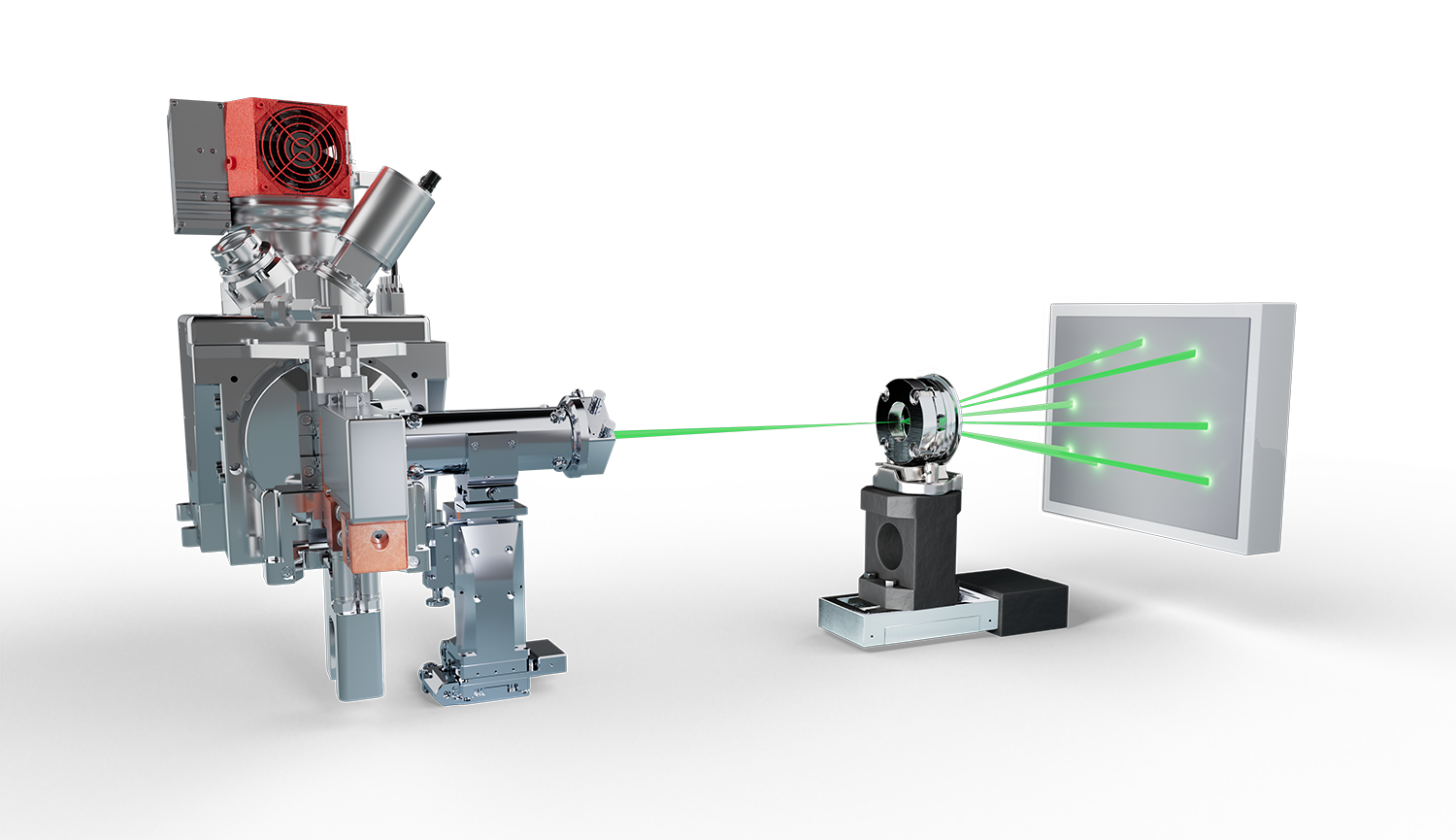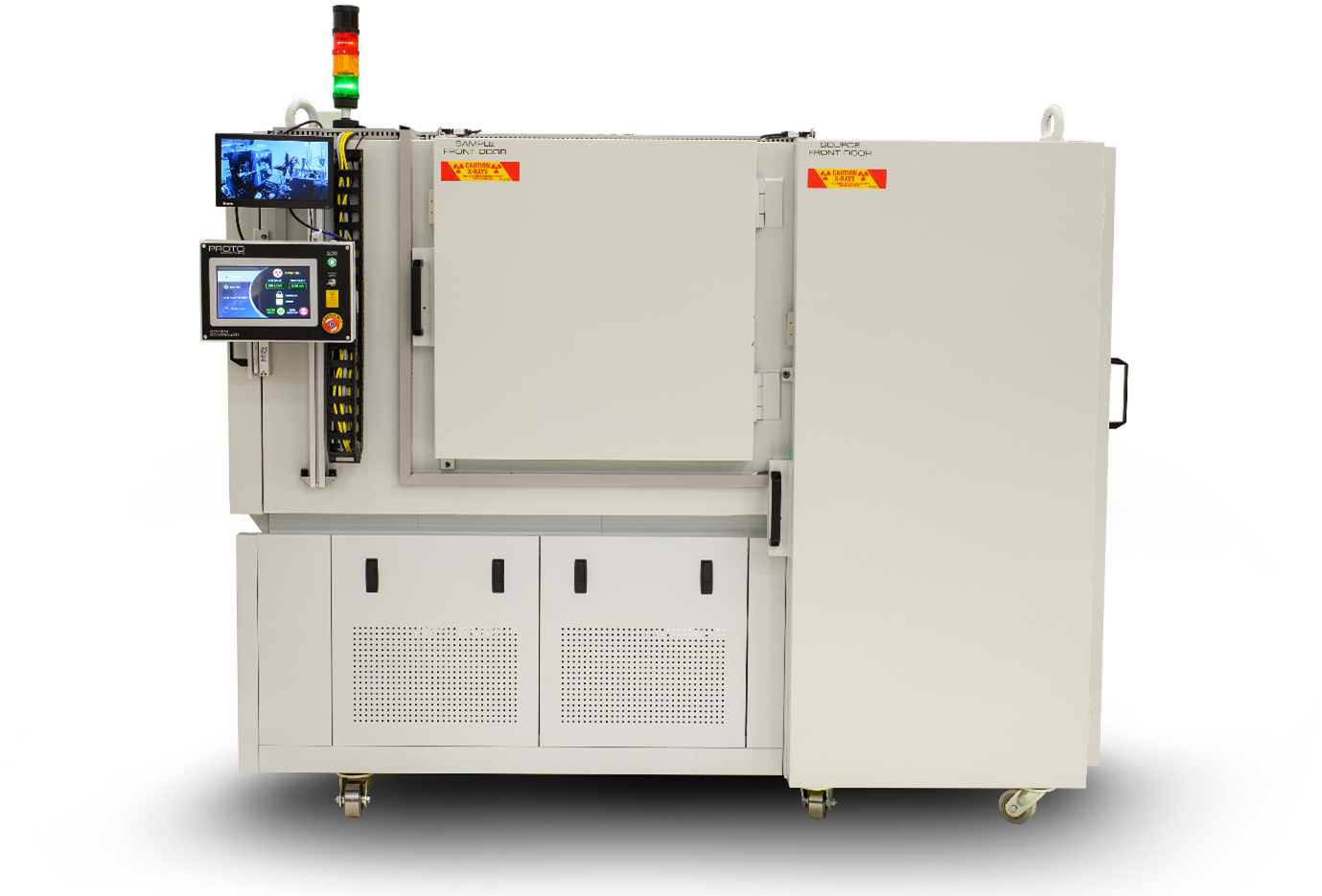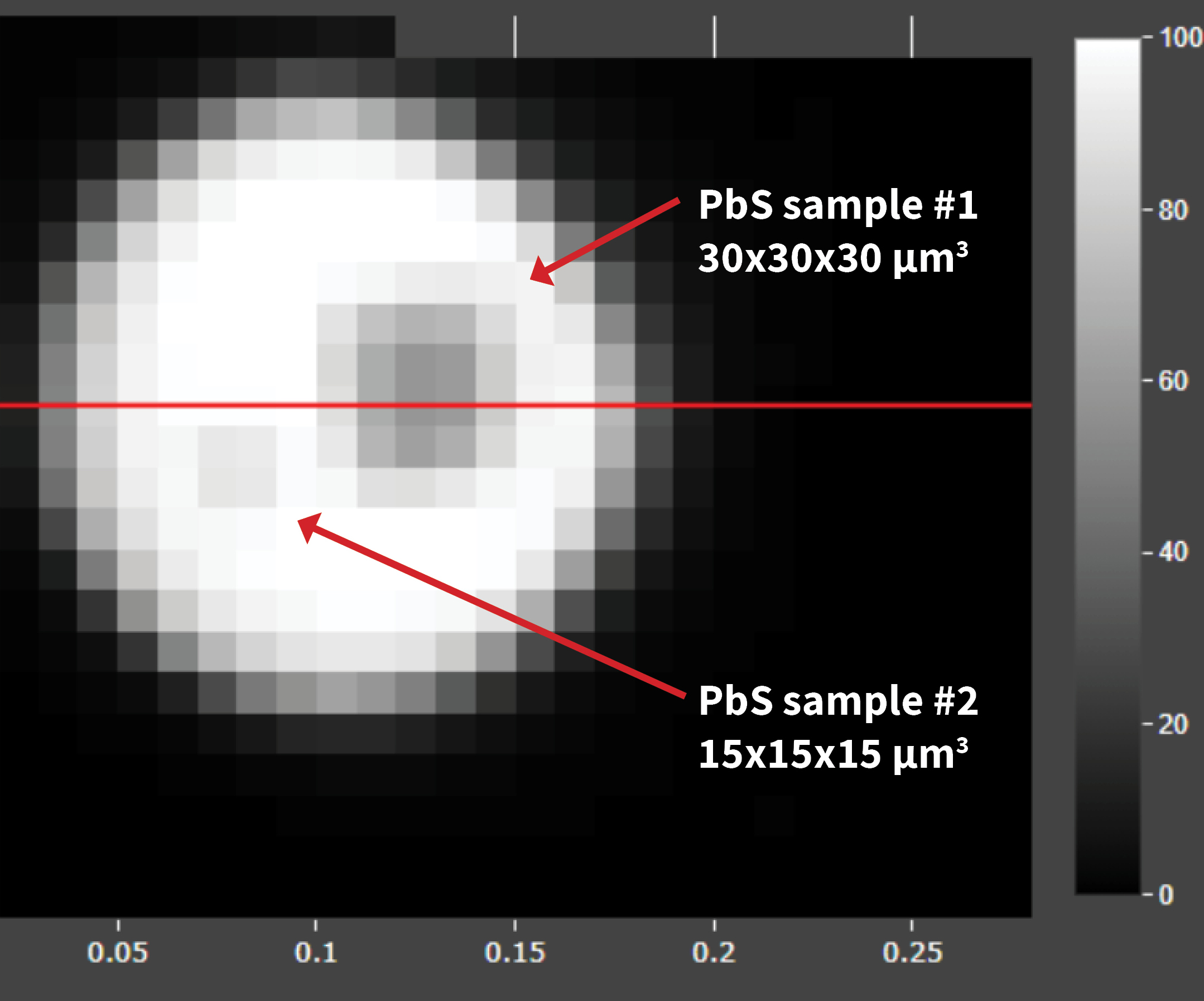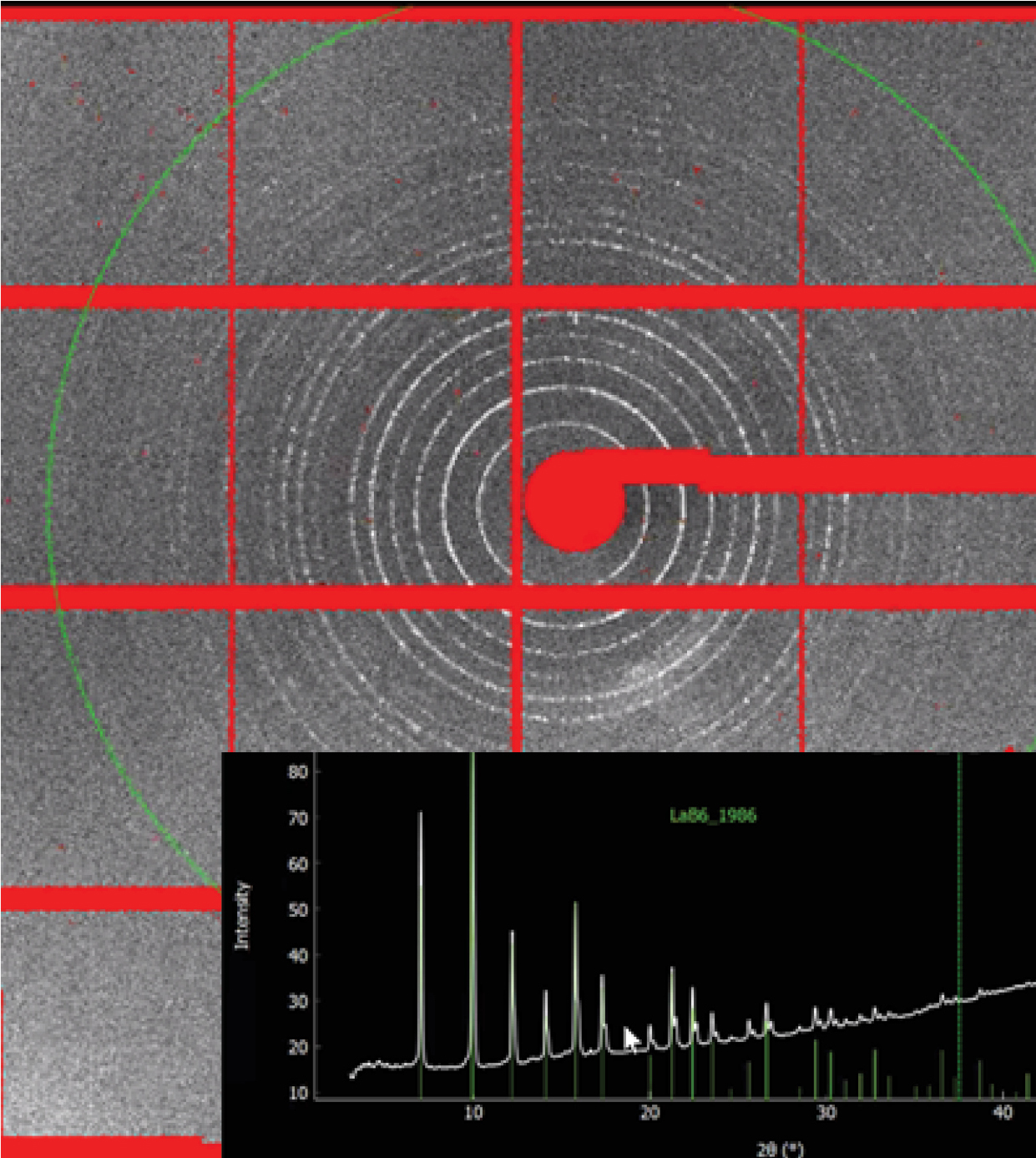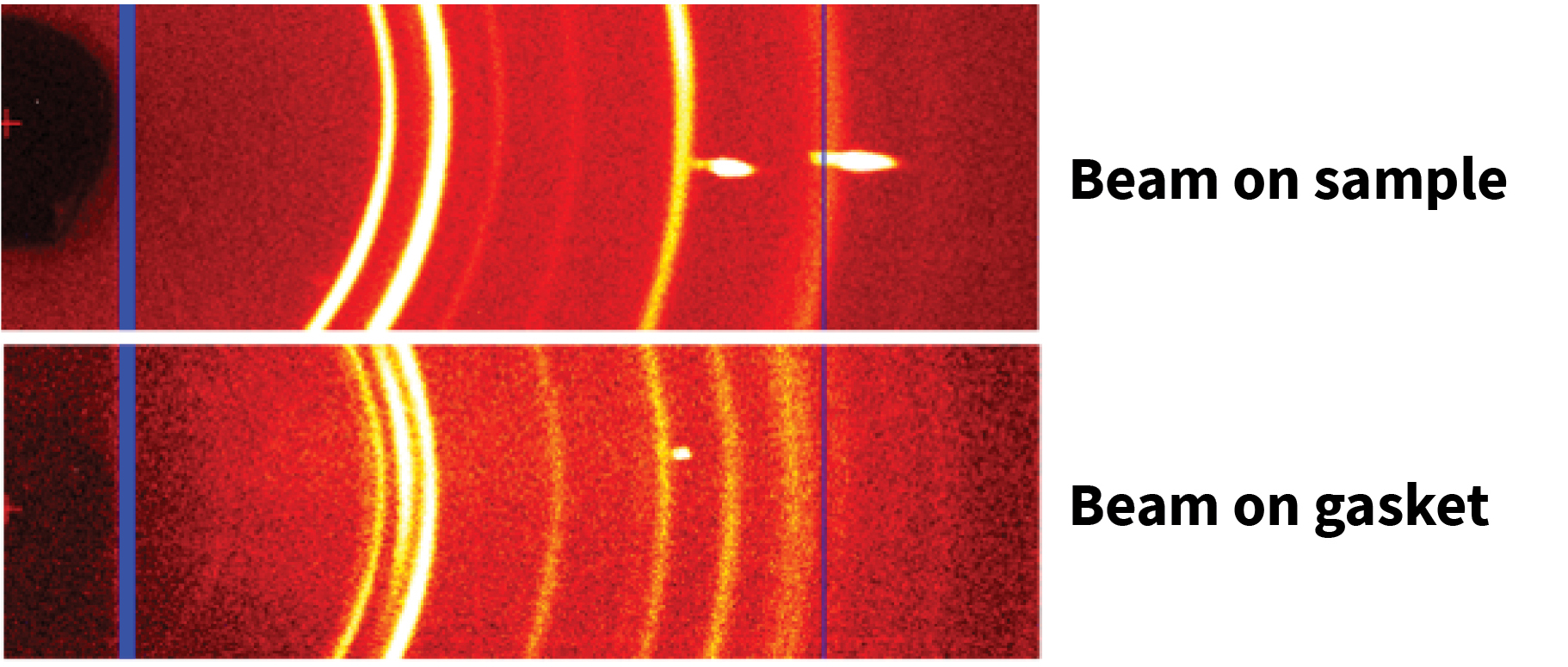High pressure XRD
The samples can either be single or powder crystal and the setup is similar to that of a single crystal diffractometer. However, with the difference that the sample position is equipped with a Diamond anvil cell (DAC). The DAC is basically two gem quality diamonds mounted tip to tip in a metal case with screws that push the diamond tips (culets) together. A gasket with a rather small opening of e g Rhenium is mounted around the tips to hold the sample(s) in place. The DAC is then illuminated with the X-ray beam and in order to collect the diffracted signal the beam has to pass through both the diamonds and the sample and preferably without interaction with gasket material.
The challenges with the method include:
- Absorption of X-rays through the DAC.
- Limitation in outgoing reflections from the cell which limit the accessible reciprocal space.
- Interference of the gasket reflections on the data.
- Small sample volume.
- Sample stability over extended data collection.
The solution to overcome this is to utilise a setup with:
- Monochromatic hard radiation (shorter wavelength/higher energy X-rays expands the accessible q range for a given cell reflection cone ).
- Collimation according to sample (clean reflections).
- Small beam (illuminating sample and only the sample of choice).
- High flux on sample (better signal and faster data collection).
Traditionally, this has limited high-end HPXRD studies to a few beam lines at synchrotron which in turn put significant limits on the research output.
High end HPXRD turn-key system now available
With the introduction of Excillum MetalJet E1+, high end HPXRD has also opened up for the home lab. By coupling the MetalJet E1+ with high-end optics, monochromatic 24 keV X-ray beams with beam focus sizes down to 10 µm can be achieved. At the same, time thanks to the extreme brightness of the source, a high flux is maintained enabling unprecedented high pressure XRD performance. Recently, the Excillum partner Proto introduced a user-customizable turn-key system utilizing the MetalJet E1+ source to fully capture the X-ray source’s performance for high-end applications such as HPXRD.
Application examples for HPXRD
- Crystal selection in DAC
- High energy high resolution powder diffraction
- Small gaskets and high pressures
Crystal selection in DAC
A common technique utilized at HPXRD beam lines is to optimize the measurement condition by illuminating the DAC with a very small beam while moving the DAC in front of the beam. Depending on where the beam hits e g gasket, sample or only the diamond there will be a variance in the attenuation of the X-ray beam. By measuring this attenuation with e g a diode it is possible to map and visualize where the gasket and samples are inside the DAC.
Now, thanks to the possibility of a tiny beam with the MetalJet E1+, this has now also been demonstrated for home-lab systems by Proto. The illustrations show such intensity variation in grayscale of a 150 µm gasket with 2 PbS crystals. Each pixel corresponds to a 10 µm translation in x and y. Now it is therefore possible to accurately position the sample (crystal) of choice in the center of the beam and collect reflection that only comes from this specific crystal.
High energy high resolution powder diffraction
Small gaskets and high pressures
Normally, for higher pressures smaller gaskets need to be used and this puts even higher demands on the beam size and alignment of the beam. This is due to the fact that any part of the beam that hits the gasket will contribute with parasitic scattering and diffraction.
In the example, the scientists at Proto used a 15 µm beam at 24 keV on an iron powder sample at 60 GPa loaded into a DAC with a 50 µm Rhenium gasket. They then tested to apply the beam either on the centre of the sample or on the gasket. As can be seen in the figures, the diffracted signal is completely different and a quick analysis show that the upper image is hexagonal iron and Rhenium in the lower. Thus, indicating that the beam size is small and precise enough to accurately measure samples also in rather small gaskets without any interference from the gasket material.
Recommended products for high pressure XRD
Related X-ray methods
Related industries & markets
Top image: By Tobias1984 – This W3C-unspecified vector image was created with Inkscape ., CC BY-SA 3.0, https://commons.wikimedia.org/w/index.php?curid=19419201
